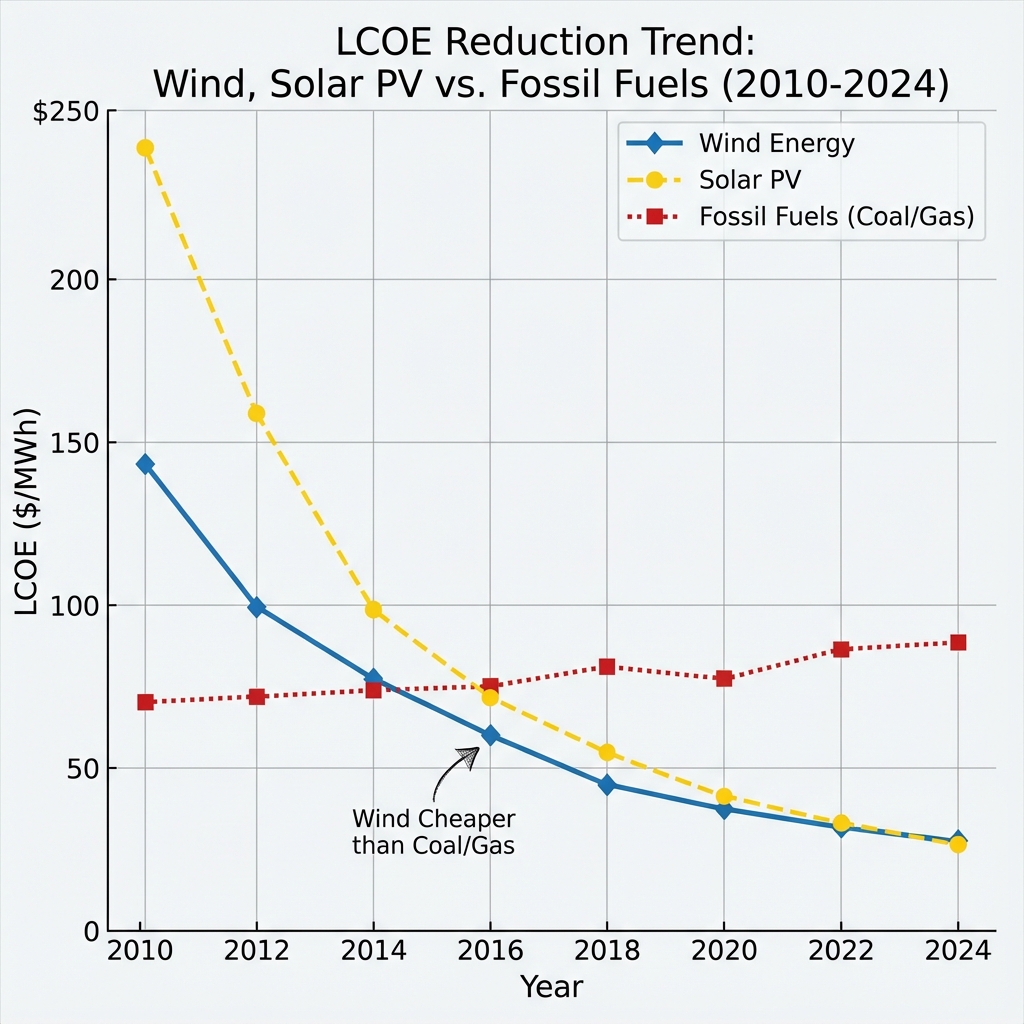Kinh Tế Năng Lượng Gió
Phân tích kinh tế và hiệu quả đầu tư năng lượng gió
Giới Thiệu
Kinh tế năng lượng gió đã chuyển đổi từ một công nghệ đắt đỏ sang trở thành một trong những nguồn điện cạnh tranh nhất trên nhiều thị trường. Với chi phí sản xuất điện quy dẫn (LCOE) giảm 70% trong thập kỷ qua, năng lượng gió hiện là xương sống của quá trình chuyển dịch năng lượng toàn cầu. Chương này phân tích toàn diện các khía cạnh kinh tế của năng lượng gió, từ vi mô đến vĩ mô.
Tổng Quan Kinh Tế Năng Lượng Gió

Các chỉ số kinh tế chính (2024):
- Đầu tư toàn cầu: 200 tỷ USD/năm
- LCOE trên bờ: 0,02-0,06 USD/kWh
- LCOE ngoài khơi: 0,05-0,12 USD/kWh
- Việc làm tạo ra: 3,4 triệu trên toàn cầu
- Tăng trưởng thị trường: 15% CAGR (Tỷ lệ tăng trưởng kép hàng năm)
Giới Thiệu
Kinh tế năng lượng gió đã chuyển đổi từ một công nghệ đắt đỏ sang trở thành một trong những nguồn điện cạnh tranh nhất trên nhiều thị trường. Với chi phí sản xuất điện quy dẫn (LCOE) giảm 70% trong thập kỷ qua, năng lượng gió hiện là xương sống của quá trình chuyển dịch năng lượng toàn cầu. Chương này phân tích toàn diện các khía cạnh kinh tế của năng lượng gió, từ vi mô đến vĩ mô.
Tổng Quan Kinh Tế Năng Lượng Gió

Các chỉ số kinh tế chính (2024):
- Đầu tư toàn cầu: 200 tỷ USD/năm
- LCOE trên bờ: 0,02-0,06 USD/kWh
- LCOE ngoài khơi: 0,05-0,12 USD/kWh
- Việc làm tạo ra: 3,4 triệu trên toàn cầu
- Tăng trưởng thị trường: 15% CAGR (Tỷ lệ tăng trưởng kép hàng năm)